Are floating shelves still on trend? Designers have their say on this once popular style
Spoiler alert, the experts say they are, but there are some alternatives on their radars

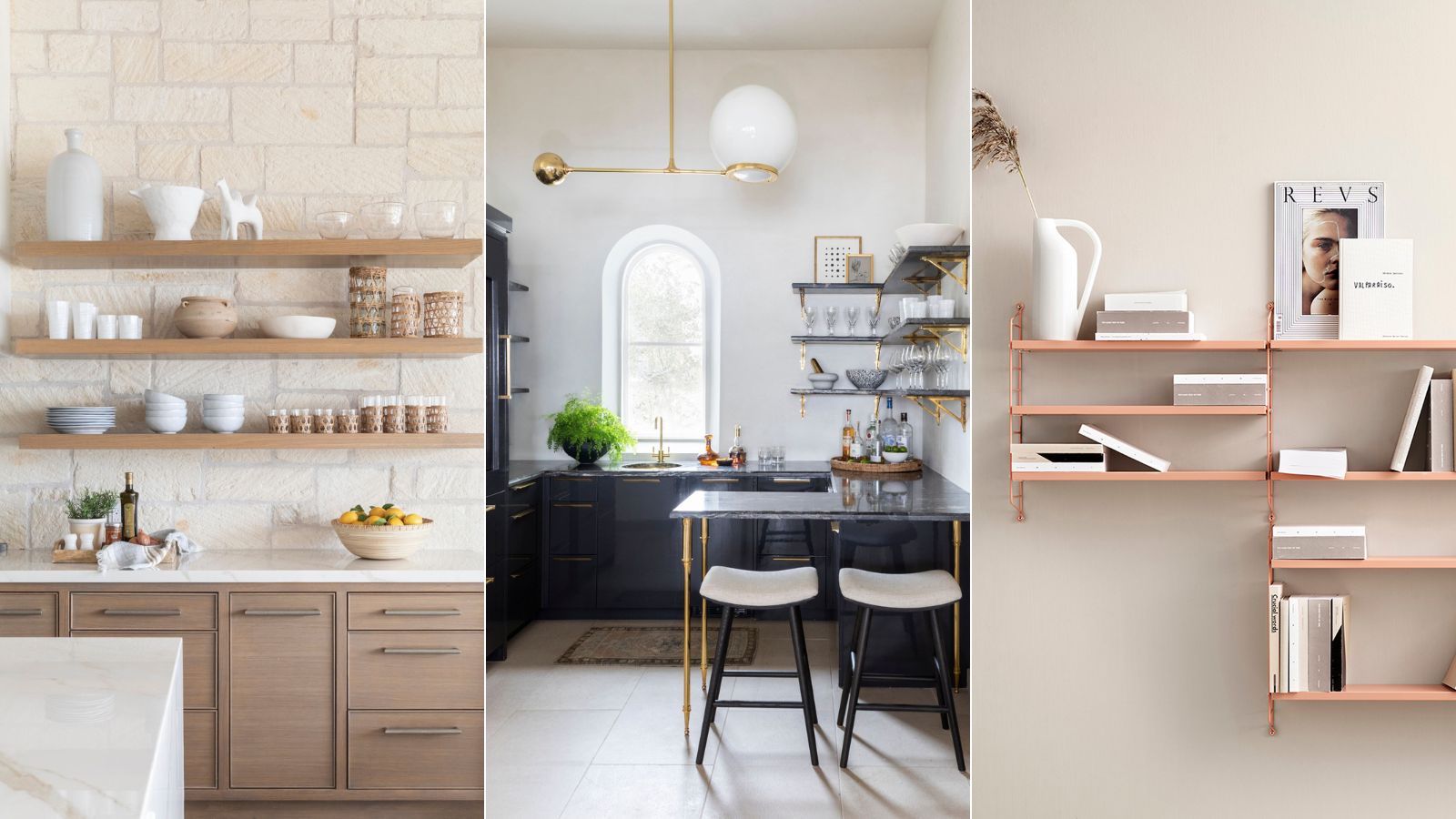
As with most design trends, there is always debate about the features and styles that feel timeless and those that will be popular for a fleeting period.
One such design feature is floating shelves. For some, they feel dated and remind them of interior design trends that have been and gone, but for others, these decorative storage pieces lean classic and fit into plenty of interior design styles, offering an opportunity to add character and depth to any room.
So, what's really the deal with floating shelves? To find out whether they are in or out for 2024, we asked interior designers and experts if floating shelves still have the appeal they once did.
Are floating shelves still on trend?
Floating shelves have always been an easy and affordable solution for adding extra storage, but where in the past they were vast and filled with belongings, their function has shifted in recent years.
'I love floating shelves as part of a wall decor motif for any number of design styles' says Kathy Kuo, CEO of Kathy Kuo Home.
'I think of these shelves as a nice option to have in your overall wall art toolkit; they're super-functional and also provide an opportunity for a shelfie moment in unexpected parts of the home' she adds.

Kathy Kuo is a celebrated interior designer and international guru within the home and lifestyle space. She has 20+ years of experience in the design industry.
As well as becoming more decorative features, recent trends have seen floating shelves used in typically functional rooms. 'I think there will always be a place for floating shelves and I often include them as an accent in kitchens,' says Marie Flanigan, of Marie Flanigan Interiors.
Design expertise in your inbox – from inspiring decorating ideas and beautiful celebrity homes to practical gardening advice and shopping round-ups.
Kitchen shelving creates a storage space that feels less bulky than cabinets, perfect for smaller spaces, and allows homeowners to keep some of their favorite kitchenware on display.
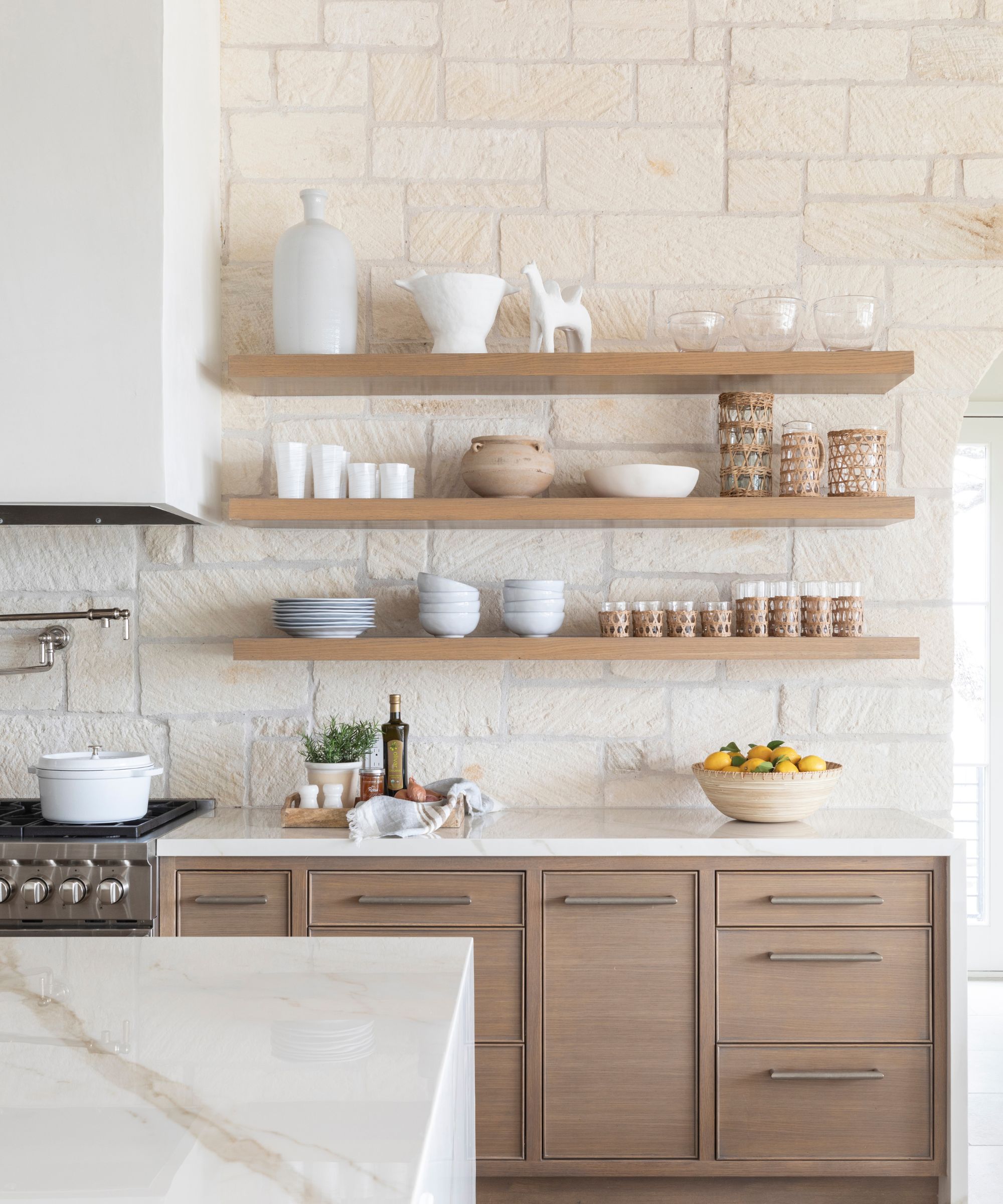
Although they still have their place in design schemes, alternative shelving options are becoming more popular among interior designers. 'Another shelving option I tend to gravitate toward is brass and glass open shelving. They lend themselves to displaying beautiful pieces that give the kitchen a styled, curated and elevated look, while keeping practical items handy' explains Marie.
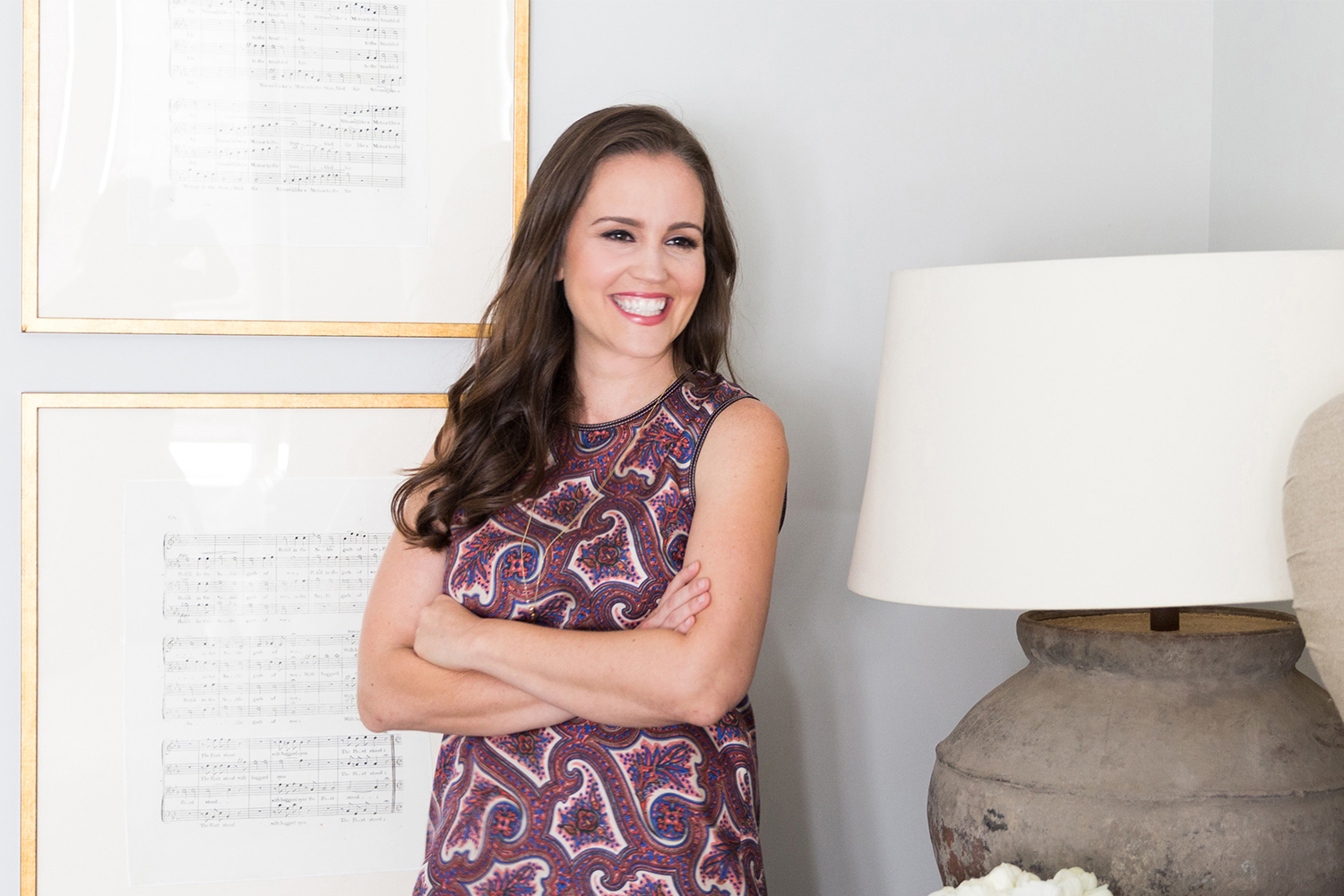
Marie Flanigan is an award-winning interior designer whose passion and achievements in design have positioned her as one of the nation’s best. She is classically trained and practiced architect, and her trademark style is evident through the sophisticated use of color, texture, and light. Every home she designs receives her personal signature of timeless elegance and innovative simplicity.
What's replacing floating shelves?
Although designers are still utilizing traditional floating shelves, other styles, and trends are sometimes favored. Here are a few alternative shelving styles interior designers are adding to their schemes.
Glass open shelving

A fresh take on floating shelves, these hanging shelves are more versatile in spaces with kitchen islands and peninsulas. Using glass allows the shelves to feel less bulky in the space, while the brass details create cohesion throughout the room.
'I love the delicate touch of brass these shelves add to a kitchen, while adding another finish to the space' says Marie Flanigan. 'They function as open shelving would with a slightly more traditional and timeless nature.'
Free standing shelves
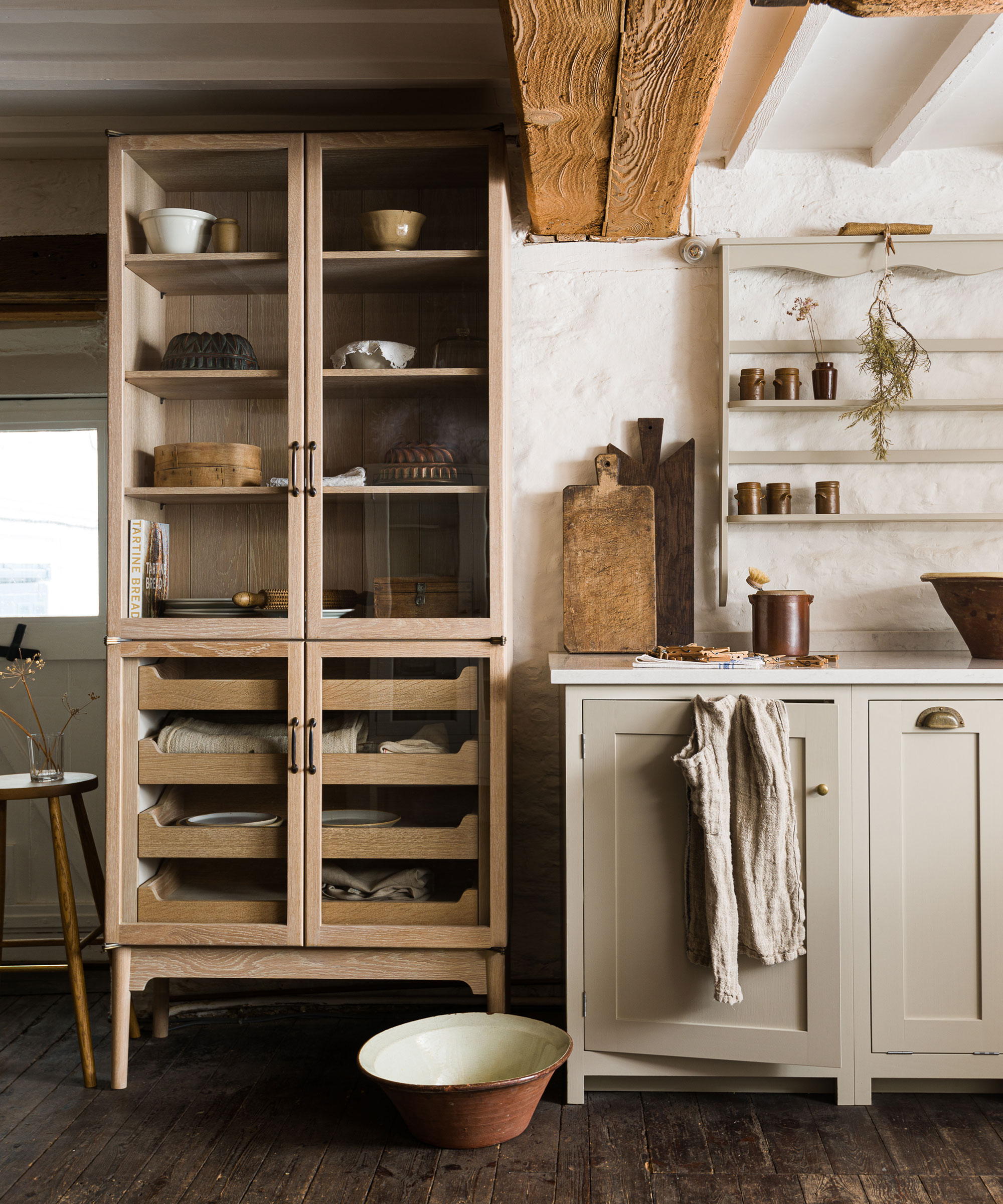
In smaller rooms like bathrooms and pantries, it makes sense to get the most from vertical space. Freestanding units are better for these spaces than floating shelves as they offer different storage options. And drawers allow items to be put away out of sight, hooks offer a place to hang dish clothes in a pantry or towels and robes in a bathroom, and you still have the shelves that are handy for easy access and adding in decor.
Shelving with decorative hardware
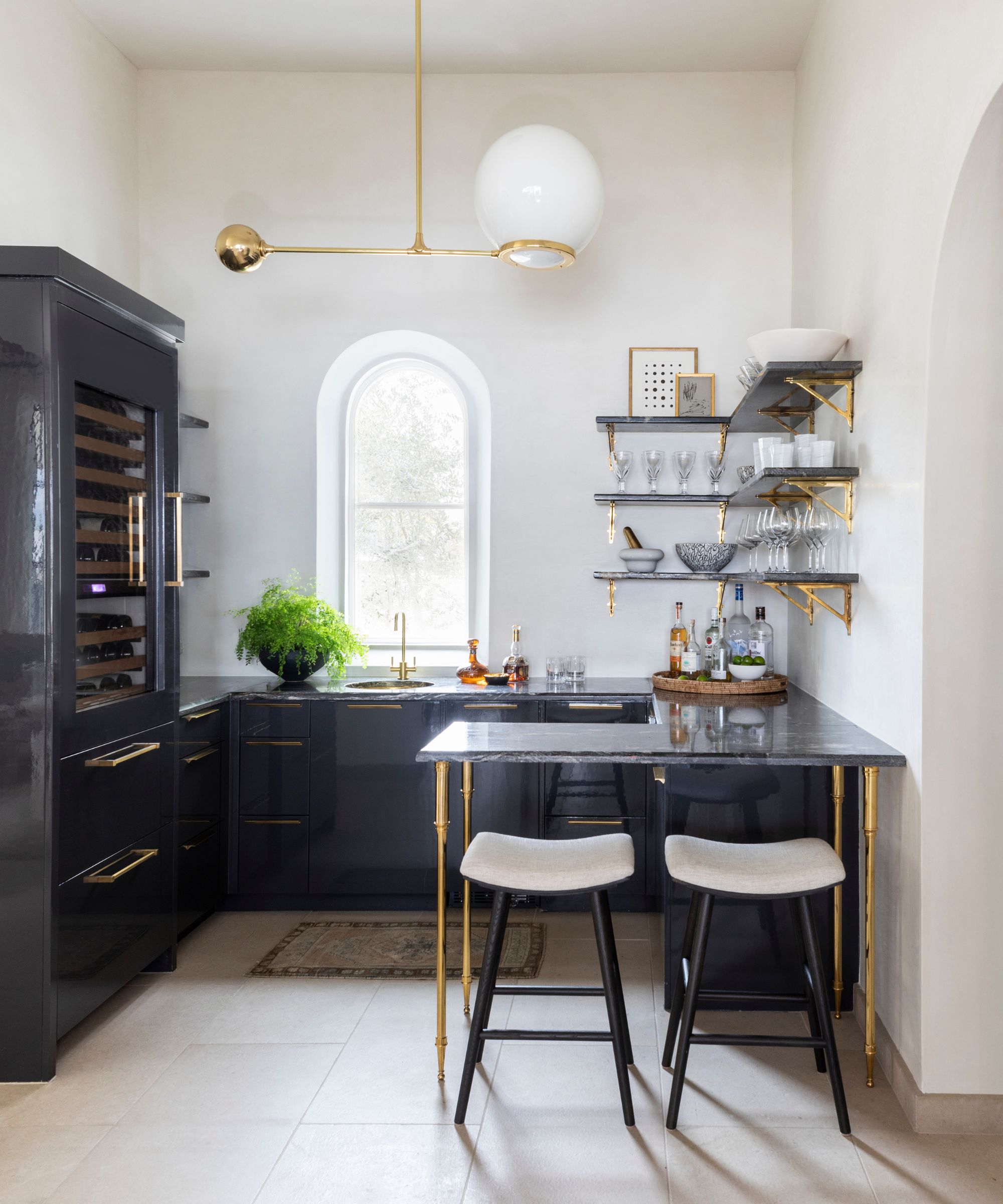
In some schemes, interior designers are opting for thinner shelves with decorative brackets fixing them to the wall. In this home bar, the gold of the shelves ties in with the rest of the hardware in the room, creating a cohesive finish.
'I am a big fan of floating shelves in alcoves - I think they work best here - but if adding shelving to a practical space like a kitchen or a bathroom I would always choose something slightly more decorative' says Hebe Hatton, head of interiors at H&G.
'These rooms can be tricky to add flourishes to, so shelving that has a little more detail in the brackets would be a go-to for me. Plus, by nature, floating shelves tend to be quite thick, so they can, well... float. Going for a bracket design allows for thinner, more elegant designs.'
Bespoke shelving units

Recently, there has been a resurgence of built-in shelving units, particularly in living areas and home offices. These designs are naturally bigger and take up more room, so they are favorable in spacious areas that not only balance out their bulkier nature but benefit from oversized design elements to avoid vast empty wall space.
While they create a focal point in the room and create a balanced scheme, they boast practical advantages, too, providing ample storage that would be difficult to achieve with floating shelves alone.
The verdict? Floating shelves are still on trend, there are just new alternatives that might suit different schemes better. Where one kitchen shines with beautiful wooden floating shelves, another works better with glass or contemporary pieces.

I’ve worked in the interiors magazine industry for the past five years and joined Homes & Gardens at the beginning of 2024 as the Kitchens & Bathrooms editor. While I love every part of interior design, kitchens and bathrooms are some of the most exciting to design, conceptualize, and write about. There are so many trends, materials, colors, and playful decor elements to explore and experiment with.